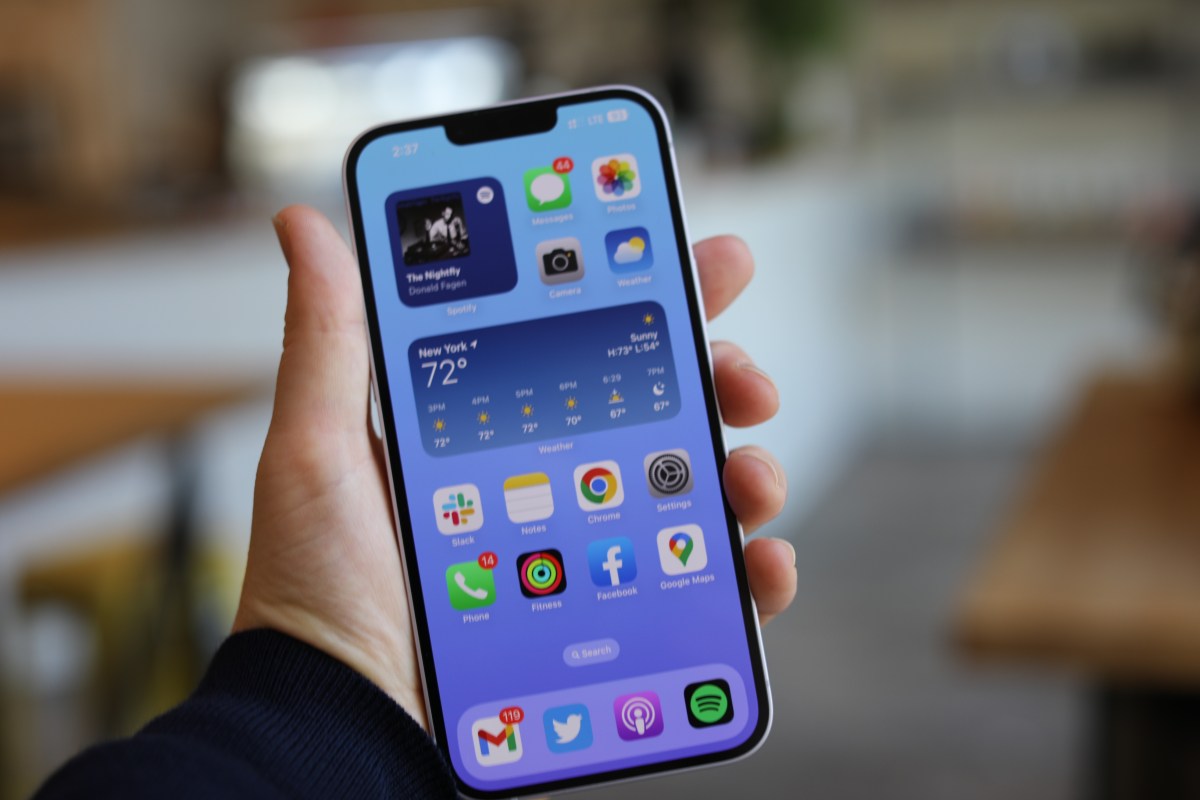Products You May Like
What constitutes a big phone in 2022? It’s been a moving target for a number of years now — albeit a target that has been steadily moving in a single direction. It’s tough to determine the exact average display size, but most flagship smartphone screens generally fall somewhere between six and seven inches.
In 2010, Steve Jobs famously touted four inches as the ideal screen size. “You can’t get your hand around it,” he noted as Android phones were slowly creeping up in size. “No one’s going to buy that.” The following year, Samsung released the first Galaxy Note. The 5.3-inch display elicited downright disgust from some. The first phablet of note was simply too big for pockets and hands.
The intervening decade has rendered those comments quaint. Technology has a way of doing that. Fast-forward to 2022, and the four new versions of the iPhone 14 come in two sizes: 6.1- and 6.7 inches. Plenty of things have transpired to get us here, not the least of which is a dramatic gain in the screen-to-body ratio. As displays have gotten larger, the overall footprint required to support them has shrunk.
I’ve been using the regular iPhone 14 as my primary device for the last few weeks. I can’t quite wrap my hand completely around it, but close enough. More important is the fact that it’s easy to use with one hand. We’ve come a long way since the days of a 5.3-inch phone seeming almost impossibly large.

Image Credits: Brian Heater
For my own daily use, I’ve come to really appreciate 6.1 inches as a sweet spot. It’s a good size screen in a hardware footprint that isn’t overwhelming. As ever, your mileage may vary. Some folks were understandably disappointed when the iPhone 14 lineup effectively marked the death of the Mini. Wanting a smaller phone is perfectly reasonable, and for now the SE will have to fill that role.
As you’ve no doubt surmised from reading this, I’ve since switched to the 14 Plus for daily use. Right off the bat I will say that I cannot, in fact, wrap my hand around it. Using it in one hand is a bit more of a mixed bag. With face unlock enabled, there are certain actions that are perfectly possible to execute in this manner: checking emails, doomscrolling through social media — basically the things many of us spend most of our time doing on our phones.
If you want to, say, respond to an email, on the other hand, things get more complicated. I can generally contort to select the specific message, but hitting Replay in Gmail and typing are going to require both hands. If you’re deep into the world of voice computing, perhaps you’ve got a workaround that works for you.
As with all things in life, there’s a trade-off here. I do quite like the 6.7-inch size for things like video. It’s also nice having all that screen as a viewfinder while taking pictures. I ended up moderating a panel at a Brooklyn bookstore earlier this week, and it’s a great size to serve as a kind of makeshift teleprompter. Granted, that’s a fairly niche need, but moving from 6.1 to 6.7 inches, those sorts of advantages start to make themselves known fairly quickly.
Beyond screen size, the biggest advantage to opting for the Plus over the standard 14 is battery. The Plus is rated at 26 hours of video playback versus the 14’s 20 hours. In practical terms for me, that meant I went to bed at around 50% battery and woke up around 37%. You should be able to make it through a full 24 hours without an issue. There’s a nice peace of mind in not having to worry about finding a charger during the day.
We’re not talking an Apple Watch Series 8 to Ultra-sized jump here, but there’s a lot to be said for not having to worry about having a phone die on you when you’re out in the world.
The 14 Plus sits in an interesting kind of liminal space in the iPhone line. It’s the entry-level model, and it’s not the most premium. It’s closer to the former, and similar in practically every respect aside from size. Interestingly, it’s actually lighter than the smaller 14 Pro. That’s something I noticed almost immediately, having been using the Pro a bit, as well. That’s certainly of note for a large phone like this. At $899, it’s also $100 cheaper than the Pro and $200 less than the Pro Max.

Image Credits: Brian Heater
The 14 is the device you get when you want a new iPhone, but don’t need all the latest bells and whistles. The 14 Pro sits on the bleeding edge of iPhone technology. The 14 Pro Max is a kitchen sink device. The Plus is for the person who prefers the larger screen, but doesn’t require all of the aforementioned frills. The surefire way to figure out which is right for you is to try them on for size at a local brick and mortar.
I’d say the regular 14 makes the most sense for the most users. Upgrade to the Pro if you want better photos and a faster chip (and/or are generally dazzled by everything the Dynamic Island has to offer). If screen size is your chief concern, however, that 0.6 inches makes a lot of difference.
